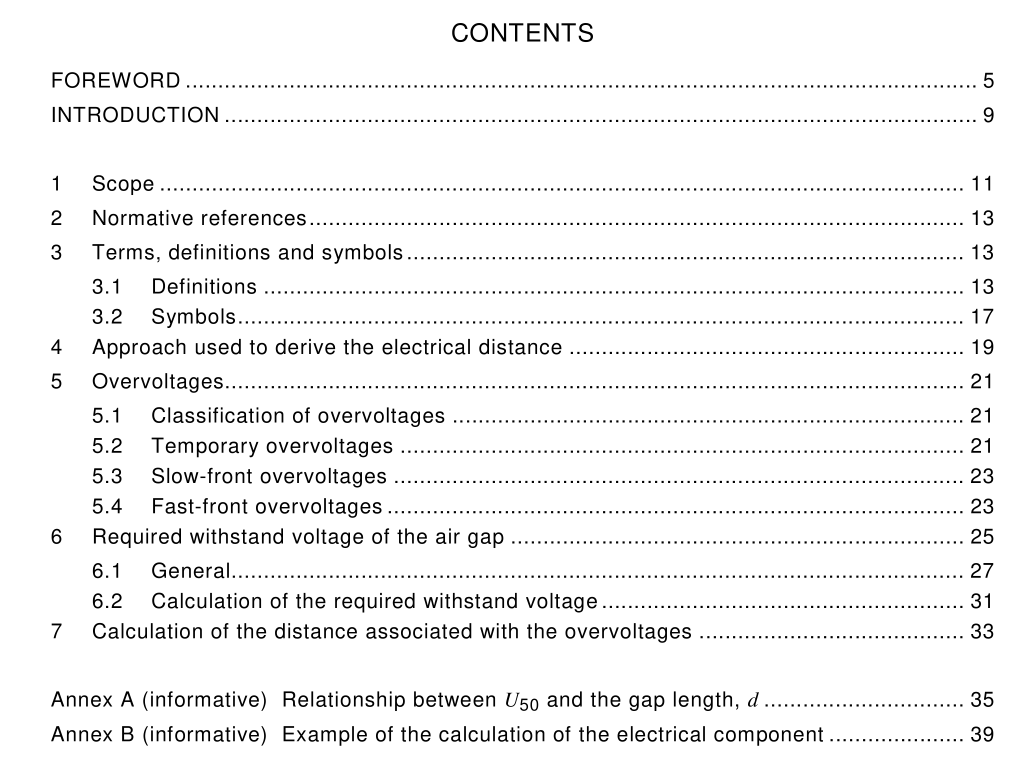IEC 61865 pdf download

IEC 61865 pdf download,Overhead lines – Calculation of the electrical component of distance between live parts and obstacles – Method of calculation
1 Scope
This International Standard provides guidance for the calculation of electrical distances between live and earthed parts required to prevent air-gap breakdown which may endanger members of the public who legitimately come close to live parts. It is applicable only to overhead lines designed to operate at more than 45 kV phase-to-phase a.c. It deals with the electrical component of distances between conductors and movable objects – vehicles on the ground, vessels on water, persons on top of objects or on the ground, wildlife on the ground (but not airborne), etc. This standard does not deal with the following public and worker safety aspects: • stationary objects – structures beneath or next to lines, trees, ground contours, etc. These, in general, require consideration as to whether the structure can be climbed on, the extent to which the tree will grow, etc; • minimum approach distance for live working, which is dealt with in IEC 61 472; • capacitive coupling or magnetic induction by overhead lines, such as voltages induced in vehicles under a line, or in pipelines buried alongside it; • currents flowing in the ground that originate from lines and result in step and touch voltages around structures during line faults or lightning strikes; • flashover of line insulators or spark gaps, or a phase-to-phase discharge, resulting in audible and electrical noise and intense arcs;• dielectric breakdown of the air between the conductors and the ground due to large fires beneath conductors; • minimum electrical distances required to prevent discharge to adjacent overhead power or communication circuits. This standard does not give the electrical distance requirements for the design of overhead line structures. Neither does it give the distance requirements for overhead line structures which need to be accessible to workers while the line is energized (for example, distances to line workers or painters). Distances between conductors and the structure of the tower are normally chosen to meet the required operating reliability of the line. It is possible that this distance may not always be adequate to allow live working or, in some cases, access for workers to parts of the structure near to live conductors.
2 Normative references
The following normative documents contain provisions which, through reference in this text, constitute provisions of this International Standard. For dated references, subsequent amendments to, or revisions of, any of these publications do not apply. However, parties to agreements based on this International Standard are encouraged to investigate the possibility of applying the most recent editions of the normative documents indicated below. For undated references, the latest edition of the normative document referred to applies. Members of IEC and ISO maintain registers of currently valid International Standards. IEC 60050(601 ):1 985, International Electrotechnical Vocabulary (IEV) – Chapter 601 : Generation, transmission and distribution of electricity – General IEC 60050(604):1 987, International Electrotechnical Vocabulary (IEV) – Chapter 604: Generation, transmission and distribution of electricity – Operation IEC 60060-1 :1 989, High-voltage test techniques – Part 1 : General definitions and test requirements lEC 60071 -1 :1 993, Insulation co-ordination – Part 1 : Definitions, principles and rules lEC 60071 -2:1 996, Insulation co-ordination – Part 2: Application guide IEC 61 472:1 998, Live working – Minimum approach distances – Method of calculation
3 Terms, definitions and symbols
For the purposes of this International Standard, certain definitions from IEC 60050(601 ) and IEC 60050(604) as well as the following definitions apply. 3.1 Definitions 3.1 .1 nominal voltage of a system suitable approximate value of voltage used to designate or identify a system [IEV 601 -01 -21 ] NOTE See also IEV 601 -01 -29: phase-to-phase voltage. 3.1 .2 highest voltage of a system U S highest value of operating voltage which occurs under normal operating conditions at any time and any point in the system [IEV 601 -01 -23] NOTE 1 See also IEV 601 -01 -29: phase-to-phase voltage.









